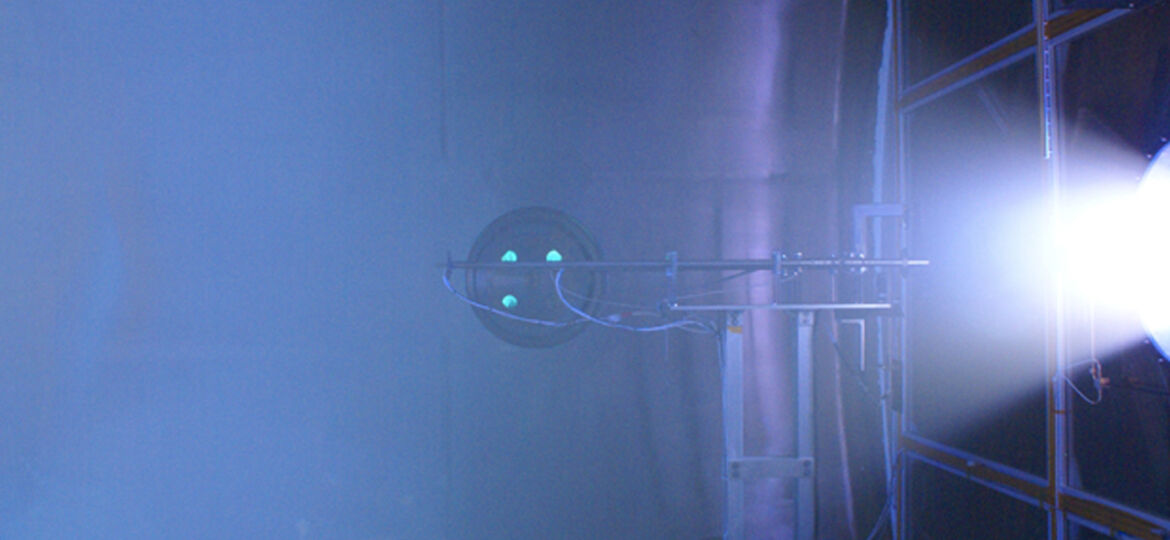
WHY THIS MATTERS IN BRIEF
It’s inevitable that humanity will one day become an interstellar species and engines like these might be the ones to get us there, wherever “there” is.
Franklin Chang-Díaz bounds up a handful of stairs and looks through a porthole cut into the side of a silver, truck sized vacuum chamber. Inside, a blueish-purple light shines, unchanging and constant, like a bright flashlight.
“It looks kind of boring,” Chang-Díaz admits, “but that plume is running at 3.5 million degrees. If you stuck your hand in that, it would be very bad.”
The engine firing in the vacuum chamber is potentially revolutionary for two reasons; first, unlike gas guzzling conventional rocket engines this plasma Variable Specific Impulse Magnetoplasma Rocket (VASIMR) engine only needs a small amount of fuel, and second, this might be the engine that takes humans beyond our solar system.
It was always thought that the VASIMR engine was theoretically possible – generate a plasma, excite it and push it out a nozzle at high speed, but for a long time the challenge of actually building it – managing the plasma and its thermal properties, then successfully firing it for a long period of time – seemed daunting. And that led many scientists to question its practicality, with some of the community even calling the whole thing a hoax.
Chang-Díaz earned his doctoral degree in plasma physics from MIT and is no stranger to space flight – he flew seven shuttle missions, matching Jerry Ross’ record for most spaceflights ever, and over time he developed the theory of the plasma rocket and began to build prototypes. In 2015 as part of a program to develop the next generation of in-space propulsion systems, NASA awarded his company, Ad Astra, a three year $9 million contract and by the end of the contract NASA want a plasma rocket that can fire for 100 hours at a power level of 100 kilowatts.
Now, about halfway through the contract, Ad Astra has managed to produce an engine that’s fired at 200kW and 100kW for 10 seconds and 50kW for one minute, so just another 99 hours, 59 minutes and 50 seconds to go. But it’s a start – and for an engine that was, up until recently, only theoretical – like the fabled ”impossible” EM drive, that’s not bad. But the news doesn’t stop there – the ions that the engine’s expelling travel at over 180,000 kmh (120,000mph), and that’s enough to create a very fast rocket, and reach the stars.
The rocket engine starts with a neutral gas as a feedstock for plasma, in this case argon. The first stage of the rocket ionizes the argon and turns it into a relatively “cold” plasma. The engine then injects the plasma into the second stage, the “booster,” where it is subjected to a physics phenomenon known as ion cyclotron resonance heating. Essentially, the booster uses a radio frequency that excites the ions, swinging them back and forth.
As the ions resonate and gain more energy, they’re spun up into a stream of superheated plasma. This stream then passes through a corkscrew shaped nozzle and is accelerated out of the back of the rocket, producing thrust.
The engines design has a couple of key benefits over most of today’s existing propulsion technologies, for example, most notably, unlike chemical rockets, it operates on electricity. As it flies through space, therefore, it does not need massive fuel tanks or a huge reservoir of liquid hydrogen and oxygen fuel. Instead, the rocket just needs some solar panels.
The Sun powers both the production of plasma and the booster that excites it, and the degree to which it can do either can be altered as needed. When a spacecraft needs more thrust, more solar power can be put into making plasma – while this process uses more propellant it helps provide the engine with the thrust it needs to escape gravity wells, such as Earth orbit. Later, when the spacecraft’s moving quickly, more power can be shifted to the booster, providing a higher specific impulse and greater fuel economy.
“It’s like shifting gears in a car,” explains Chang-Díaz, “the engine doesn’t change. But if you want to climb a hill, you put more of your engine power into torque and less into rpm, so you climb the hill, slowly, but you’re able to climb. And when you’re going on a freeway, flat and straight, you upshift. You’re not going to go to Mars in first gear. That’s the problem. It’s why we run out of gas going to Mars with a chemical engine.”
Another benefit of the engine’s design is that the plasma remains confined within a magnetic field, inside the engine, throughout the burn. In practical terms, this should greatly reduce the wear and tear on it – which no doubt will come in handy if, indeed, one day it’s going to be used to fly people around the Solar System.

















Excellent article. I have been following the Chang/VASMIR for some time now.
I wish they could do the 100/100 this year. Will NASA pay more attention to the
potential of this engine?
E. Kell
It’d be a milestone if they could, I’ll keep you updated, thanks El
this is an old technology which is more than forty years old – it is not even yesterday ….
EMdrive – this is what will work well in space in the future.